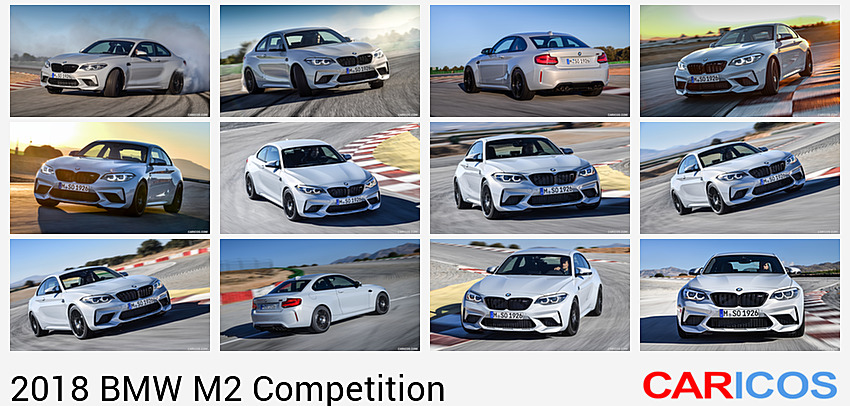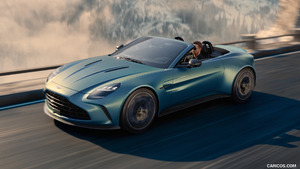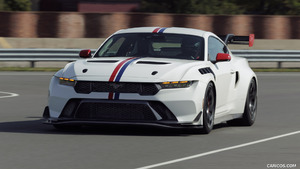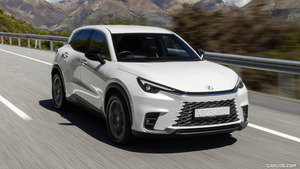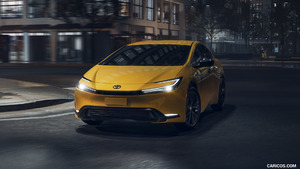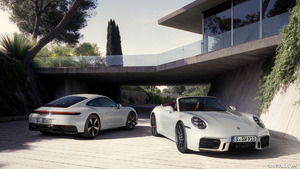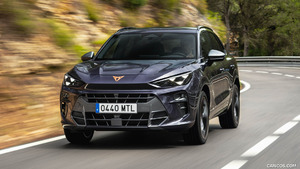BMW M2 Competition
With the new BMW M2 Competition (combined fuel consumption with six-speed manual gearbox: 10,0 – 9,9 l/100 km; combined CO2 emissions: 228 – 225 g/km*; combined with optional M Double Clutch Transmission (M DCT): 9,2 l/100 km; combined CO2 emissions: 210 – 209 g/km)*, BMW M GmbH is setting fresh benchmarks in the compact high-performance sports car segment and adding marked refinement to the character of the BMW M2 Coupé.
New engine with 410 HP.
The centrepiece of the new BMW M2 Competition is its new engine, based on the power unit from the BMW M3 and BMW M4. The double-charged six-cylinder in-line engine with M TwinPower Turbo technology delivers 410 HP between 5,250 and 7,000 rpm. The engine’s peak torque of 550 Nm is on tap between 2,350 and 5,200 rpm. The power unit boasts an insatiable appetite for revs for a turbocharged engine and offers exceptionally linear power delivery across a broad rev range. A dual exhaust system with electronic flap control provides the distinctive M sound, while the M TwinPower Turbo technology delivers outstanding efficiency. In relevant EU countries, the BMW M2 Competition also boasts an Otto particulate filter (OPF) to further reduce fine dust pollution.
The new BMW M2 Competition completes a standard sprint, from a standstill to 100 km/h, in 4.2 seconds (with M DCT, 4.4 seconds with six-speed manual gearbox). The top speed is electronically limited to 250 km/h. The car can be combined with the M Driver’s Package to raise the top speed to 280 km/h – 10 km/h more than with the BMW M2 Coupé. The consumption figures are also noteworthy: with six-speed manual gearbox, the combined fuel consumption is 10,0 – 9,9 l/100 km, the combined CO2 emissions are 228 – 225 g/km*. With the optional M Double Clutch Transmission (M DCT), these numbers decrease to only 9,2 l/100 km 210 – 209 CO2 emissions g/km combined.*
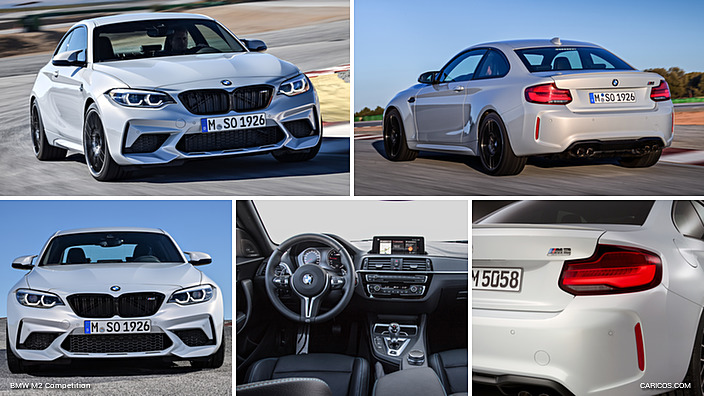 2018 BMW M2 Competition
2018 BMW M2 Competition
The cleverly designed oil supply system for the engine is taken directly from motorsport, while the cooling system from the BMW M4 with Competition Package is also used with some adjustments. The BMW M2 Competition includes race-ready variants of the oil supply and cooling systems that have been tested by many years’ experience in motor racing. An enlarged BMW kidney and a new front skirt with increased air flow are exterior signs that point to the use of this improved cooling system. The kidney is finished in high-gloss Shadow Line black paint as standard. This is also the case for the side gills on the front wings, and for the redesigned quartet of tailpipes in the twin exhaust system, with two electrically adjustable valves. The dark M Competition Badge graces the rear end of the car. The design of the new double-arm wing mirrors improves the aerodynamics and they are typically characteristic of the new BMW M2 Competition.
BMW M engineers have also adjusted the driving dynamics of the BMW M2 Competition to take the increased performance into account. The striking CFRP high-precision strut from the BMW M3/M4 is immediately noticeable in the engine compartment. This improves front section rigidity and increases steering precision. The characteristic curves for the electromechanical power steering, the Active M Differential and the Dynamic Steering Control (DSC) system have also been adjusted.
Selector switches to adjust settings.
The BMW M2 is the first model to be equipped with selector switches on the centre console that allow instant control of the characteristics and settings for the engine, steering and Drivelogic functions, if M DCT is available. The various configurations can be combined with one another in whichever way the driver prefers and can be stored for easy access using the M1 and M2 buttons on the steering wheel. The standard range of equipment now includes the red start/stop button, adaptive LED headlights and front Park Distance Control (PDC).
Fascinating new options.
The new, optional M Sport seat is a real highlight in terms of function and form. The bucket-style shape borrows heavily from motorsport and provides drivers with optimum support, while the headrests are integrated into the seat back rest. The backrest also features an illuminated M2 logo at shoulder height. The black leather upholstery boasts design perforations in the seat and backrest, available in blue or orange. The standard sports seats are also available with black leather upholstery, featuring contrast stitching in blue or orange.
The many years of motorsport experience at BMW M GmbH are reflected in the availability of the new M sport brakes, which provide maximum brake performance thanks to larger brake discs (front axle: 400 mm diameter, rear axle: 380 mm diameter) and brake calipers painted grey (front axle: 6-piston fixed caliper, rear axle: 4-piston fixed caliper). The optional 19-inch forged alloy wheels (front axle: 9J x 19, rear axle: 10J x 19) are also available with the new Y-spoke design. A new metallic paint colour is also now exclusively available for the BMW M2 Competition: Hockenheim Silver.
Drivetrain
The double-charged six-cylinder in-line engine, based on the power unit from the M3 and M4, offers the best of both worlds: It guarantees a unique appetite for revs for a turbocharged engine, offers exceptionally linear power delivery across a broad rev range and possesses a distinctive engine sound. M TwinPower Turbo technology provides unbeatable torque, available across a wide rev band. The engine also boasts outstanding efficiency.
The engine in the compact coupé delivers 410 HP between 5,250 and 7,000 rpm; peak torque of 550 Nm is on tap between 2,350 and 5,200 rpm. This allows the new BMW M2 Competition to complete a standard sprint, from a standstill to 100 km/h, in 4.2 seconds (with M DCT, 4.4 seconds with six-speed manual gearbox). The top speed is electronically limited to 250 km/h. The car can be combined with the M Driver’s Package to raise this to 280 km/h – 10 km/h more than with the BMW M2 Coupé. The consumption figures are also noteworthy: with six-speed manual gearbox, the combined fuel consumption is 10,0 – 9,9 l/100 km, the combined CO2 emissions are 228 – 225 g/km*. With the optional M Double Clutch Transmission (M DCT), these numbers decrease to only 9,2 l/100 km 210 – 209 CO2 emissions g/km combined.* In relevant EU countries, the BMW M2 Competition also boasts an Otto particulate filter (OPF) to further reduce fine dust pollution.
Rapid response behaviour thanks to M TwinPower Turbo technology.
BMW M TwinPower Turbo technology consists of two rapid-response MonoScroll turbochargers, High Precision Injection, VALVETRONIC variable valve control and Double-VANOS variable camshaft timing. The valve and camshaft timing work in tandem for maximum variability of the control intake valve lift. Razor-sharp responses and optimal power delivery are the result. Fuel consumption and exhaust emissions are also reduced. A ‘closed deck’ design increases crankcase rigidity for the six-cylinder engine and allows cylinder pressures to be increased for maximized power output. Brushless, LDS-coated cylinder bores also lead to a significant reduction in weight.
Experience from motorsport.
Maintaining consistent levels of oil supply is particularly challenging on the racetrack, thanks to the extremely dynamic performance of the BMW M2 Competition. This is where the extensive motor racing experience at BMW M GmbH has the chance to shine through. For example, an additional oil sump cover helps to limit the movement of lubricants when the car suddenly changes direction. Under extreme longitudinal acceleration and deceleration, an oil extraction pump and a sophisticated oil return system situated close to the turbocharger likewise help to maintain uninterrupted oil circulation. Oil is therefore supplied continuously to all engine components in all driving situations – whether in everyday motoring or during hard driving on the track.
The BMW M2 Competition features a range of measures designed to deal with the increased cooling requirements, compared with the engines in previous models. An enlarged BMW kidney and a new front skirt with modified air flow improve the flow for the front of the car. The car also makes use of the race-tested cooling system of the BMW M4 with the Competition Package, consisting of one central radiator, two side radiators and an additional engine oil cooler. Cars making use of the optional seven-speed M Double Clutch Transmission (M DCT) also feature a transmission oil cooler. This elaborate system ensures that ideal operating temperatures are maintained on short city journeys during everyday use, as well as out on the racetrack.
Dual exhaust system with two electrically-controlled flaps.
In addition to the new engine, the BMW M2 Competition also boasts a completely new exhaust system. The dual-branch design features a new muffler and the four tailpipes, finished in black chrome, mark it out as a BMW M model. Two electrically-controlled flaps ensure that the BMW M2 Competition delivers the distinctive BMW M Sound, which the driver can adjust by selecting a driving mode with M Dynamic Performance Control - by pressing a selector switch on the centre console.
Choice of two transmission variants.
The new BMW M2 Competition comes as standard with a six-speed manual gearbox, which stands out with its compact design and low weight. The use of a new type of carbon-fibre friction lining enhances shift comfort. An engagement speed control function, which blips the throttle on downshifts and lowers the engine’s revs on upshifts, makes gear changes even smoother. This also lends the car additional stability during hard driving on the track. Switching off the DSC deactivates the engagement speed control function. Wet-sump lubrication prevents any sloshing of the transmission oil and ensures all components benefit from an efficient supply of oil.
The seven-speed M Double Clutch Transmission (M DCT with Drivelogic) can be ordered as an option. This system effectively combines two gearboxes, each with its own clutch, and enables either extremely fast gear changes with no interruption in the flow of power or ultra-smooth shifts. The driver can change gear either in automated mode or manually using the gearshift lever on the centre console or shift paddles on the M leather steering wheel. In automatic and manual modes, Drivelogic provides the driver with a choice between preconfigured driving programs: COMFORT, SPORT and SPORT+. In automatic mode, the driver can then adjust the timing of the gearshift, its intensity, and the automatic throttle blipping function on downshifts.
Moving between the transmission’s manual modes alters the shift dynamics, but it is the driver who determines the timing of a gear change. The system detects which gear the driver will choose next on the basis of the engine revs, the accelerator position, the level of acceleration and the driving mode, and engages it before the driver has actually moved the shift paddle. As a result, the clutches now only need to open or close for the gear-change process to be completed. The change of gear is therefore executed in fractions of a second.
Dynamic performance
The BMW M2 Coupé has already set the standard in its segment when it comes to agility, driving feeling, directional stability, steering precision and controllability at the limit, without short-changing the driver in everyday use. These chassis characteristics have been further refined for the BMW M2 Competition, and adjusted to take the increased engine performance into account.
Increased front-end rigidity for greater steering precision.
The engine compartment conceals the most striking component: the CFRP high-precision strut from the BMW M3/M4. This one-piece component is made from extremely light, yet high-strength, carbon fibre and weighs in at just 1.5 kg. Together with the bulkhead strut from the M4, it significantly increases front section rigidity to improve steering behaviour and precision.
The high-performance chassis refers back to the lightweight aluminium construction of the front and rear axles from the BMW M3/M4. In order to ensure extremely precise wheel location, play-free ball joints are used to transmit transverse forces. The longitudinal forces passing through the chassis are transmitted into the torque struts directly via special elastomer bearings, which simultaneously delivers the desired rolling comfort. All the control arms and wheel carriers of the new five-link rear axle are made from forged aluminium. In addition, a racing-derived rigid connection, dispensing with rubber bushings, is used to fix the lightweight steel grid-type rear axle subframe to the body. This further improves wheel location and tracking stability.
BMW M engineers have adjusted the characteristic curves of the electromechanical power steering to improve performance and increase front section rigidity. The integrated Servotronic function with M-specific characteristics controls the level of steering assistance electronically according to the car’s speed and the settings made with Drivelogic, which allow drivers to adjust power steering assistance at any time to their personal preferences. Active M Differential and recalibrated DSC. The Dynamic Stability Control has been completely recalibrated. In the BMW M2 Competition, the electronics exercise even more delicate control, providing improved traction in wet and slippery conditions, and ensuring that traction is not interrupted during drifts. Support is provided by the Active M Differential, an electronically controlled multi-plate limited-slip differential that takes traction and directional stability to a new level of precision and speed. The locking effect can be varied between 0 and 100 percent, according to the driving situation, and reacts to the car’s steering angle, accelerator position, brake pressure, engine torque, wheel speed and yaw rate. The control unit uses this analysis of the driving situation to detect the threat of traction loss on one side of the car and calculates the required locking effect, which is engaged by an electric motor. Full locking power of 2,500 Nm is available within 150 milliseconds. This allows the system to prevent a wheel from spinning in extreme conditions on slippery road surfaces or when the two rear wheels are experiencing significant differences in friction coefficient.
In certain situations, the Active M Differential even works proactively. When pulling away on slippery surfaces, the lock is closed by a defined percentage even before a wheel can start to spin, to ensure that both wheels develop equal slip at the same time. The lock is also closed by the required percentage through enthusiastically driven corners, according to the levels of lateral acceleration and drive at work. This prevents the low-traction inside wheel from starting to turn too quickly. This permanent and infinitely variable differential control also increases agility, avoids understeer on the way into corners and improves directional stability under braking and load changes.
M Dynamic Mode (MDM) is a sub-function of Dynamic Stability Control (DSC) that can be activated automatically in SPORT+ mode, or engaged manually. In certain situations – e.g. sporty and dynamic driving on the race track – it allows a greater degree of wheel spin. The stabilising measures familiar from DSC mode now intervene later, increasing the freedom available to drivers at the dynamic limit. The extra wheel slip enhances traction and therefore propulsion. More significant oversteer and understeer are possible, as are moderate, controlled drifts, but the Dynamic Stability Control active safety aids can still be relied on in critical situations.
M Sport brakes born of motorsport experience.
The high-performance M Sport brakes provide maximum brake performance and are also a product of the extensive motorsport experience at BMW M GmbH. Compared to the standard M compound brakes, with brake calipers painted in a blue metallic finish (front axle: 4-piston fixed caliper, rear axle: 2-piston fixed caliper) and perforated and inner-vented brake disc rings (front axle: 380 mm in diameter, rear axle: 370 mm in diameter) in grey cast iron, the M Sport brake has larger brake pads (front axles: 400 mm in diameter, rear axle: 380 mm in diameter) and brake calipers (front axles: 6-piston fixed caliper, rear axle: 4-piston fixed caliper), painted grey. These high-performance brakes guarantee excellent deceleration in all conditions and impress with their resistance to fade and heat.
New forged wheels with two colour options.
The optional, new 19-inch forged wheels are available (front axle: 9J x 19, rear axle 10J x 19) with the Y-spoke design in a high-sheen finish, and in two colour options: light high-sheen, or black front surface. The front tyres in 245/35 ZR 19 format meet the most demanding requirements in terms of lateral stability, directional stability, steering feel and steering precision. The rear tyres in 265/35 ZR 19 format deliver optimal traction, lateral stability and directional stability.
Design
The new design of the front skirt with modified air intake optimizes the flow of fresh air to the sophisticated cooling system, while simultaneously improving the visual presence of the car. The enlarged BMW kidney is painted black, as are the side gills on the front wings. This colour is mirrored in the new design of the four tailpipes, making this a striking differentiating feature of the M Competition models. A dark M Competition Badge graces the rear end of the car. The new double-arm design of the wing mirrors improves the aerodynamics and is typically characteristic of the BMW M2 Competition.
Exclusive paint colour: metallic Hockenheim Silver.
Two new colours have been added to the range of paints available for the BMW M2 Competition. The metallic Sunset Orange colour had already featured on other BMW M Performance Models, but this marks the debut for the exclusive new metallic Hockenheim Silver paint.
Interior, equipment and ConnectedDrive
When opening the door of the new BMW M2 Competition, drivers are greeted by the M2 Competition logo on the sill plate. They can then settle into the ergonomically and visually outstanding M Sport seat (optional). The bucket-style shape of the seat borrows heavily from motorsport and provides drivers with optimum support, while the headrests are integrated into the seat back rest.
An illuminated M2 logo nestles in the backrest of the M Sport seat. The seat and the backrest boast black leather upholstery with design perforations, available in blue or orange. These touches of colour are also reflected in the leather stitching on seats, armrests and paddle covers, while Alcantara leather is used to cover the side bolsters. The orange colour variant is also available now for the standard sport seat, as an alternative to the blue palette. The classic BMW M stripes have been woven into the M safety belts and the M-specific stitching can also be found on the steering wheel.
A glance at the dashboard reveals the Welcome layout for the instruments, which displays the M2 Competition logo for a few seconds. A red start / stop button underlines the motorsport heritage of the car.
Selector switches on the centre console.
The new BMW M2 Competition provides drivers with two selector switches on the centre console that allow direct access to adjust various characteristics and settings, a feature familiar from other BMW M models. The switches can be used to directly access various settings for stability control, for example the three engine characteristics, or the steering modes. Drivers can also use the selector switches to adapt the settings they want for various areas and combine these as they please. They also adjust Dynamic Stability Control (DSC) – a short dab activates MDM mode, while holding the switch down longer switches DSC off.
M1 and M2 buttons on the steering wheel.
The M1 and M2 buttons on the steering wheel also provide direct access to the range of driving modes. Drivers can save their own personal configurations chosen from the settings for stability control, engine characteristics and steering - control over the personality of the BMW M2 is at their fingertips. The M1 and M2 steering wheel buttons are preprogrammed with a Comfort and a Sport program as standard and drivers can return to these settings at any time.
New equipment details.
The development from BMW M2 Coupé to BMW M2 Competition has been accompanied by some upgrades to the standard configuration. The sporty coupé now boasts adaptive LED headlights as standard, Park Distance Control (PDC) monitors the car’s surroundings and keeps an eye on what is in front of the car, as well as to the rear.
The extensive range of equipment provided as standard marks the BMW M2 Competition out as one of the most dynamic sports cars around. This includes the lightweight M Sport chassis, the six-speed manual gearbox with throttle blipping function and the Active M Differential on the rear axle, guaranteeing optimum traction and unbeatable directional stability. Electromechanical M Servotronic power steering and the M Dynamic Mode (MDM) for Dynamic Stability Control are also available ex works, allowing aspiring racing drivers to easily enjoy controlled drifts on the circuit. Sports seats, the M leather steering wheel, an M footrest and knee pad on the centre console and trim strips with surfacing in porous carbon fibre all adorn the interior.
Customers can also add further individual touches to their car with a hand-picked range of options. The list of options includes highlights such as the seven-speed M Double Clutch Transmission (M DCT) with Drivelogic, allowing gear changes with no interruption in the flow of power, or the M Driver’s Package, which raises the limit on the top speed of the new BMW M2 Competition to 280 km/h and comes with a BMW Driving Experience voucher for a track training course.
BMW ConnectedDrive enhances safety, comfort and entertainment.
New BMW M2 Competition customers can also make use of numerous driver assistance systems and mobility services from BMW ConnectedDrive. The range of optional driver assistance systems includes the Driving Assistant, which comprises features such as Collision Warning and Pedestrian Warning with City Braking function, and Lane Departure Warning. Speed Limit Info flashes up traffic signs and the permitted top speed, and the driver is warned if overtaking is not allowed. The rear-view camera teams up with rear Park Distance Control to assist drivers with reverse parking and manoeuvring. The Navigation Professional offers an ultra-sharp map display and the iDrive Touch Controller ensures the various functions are even easier to use.

